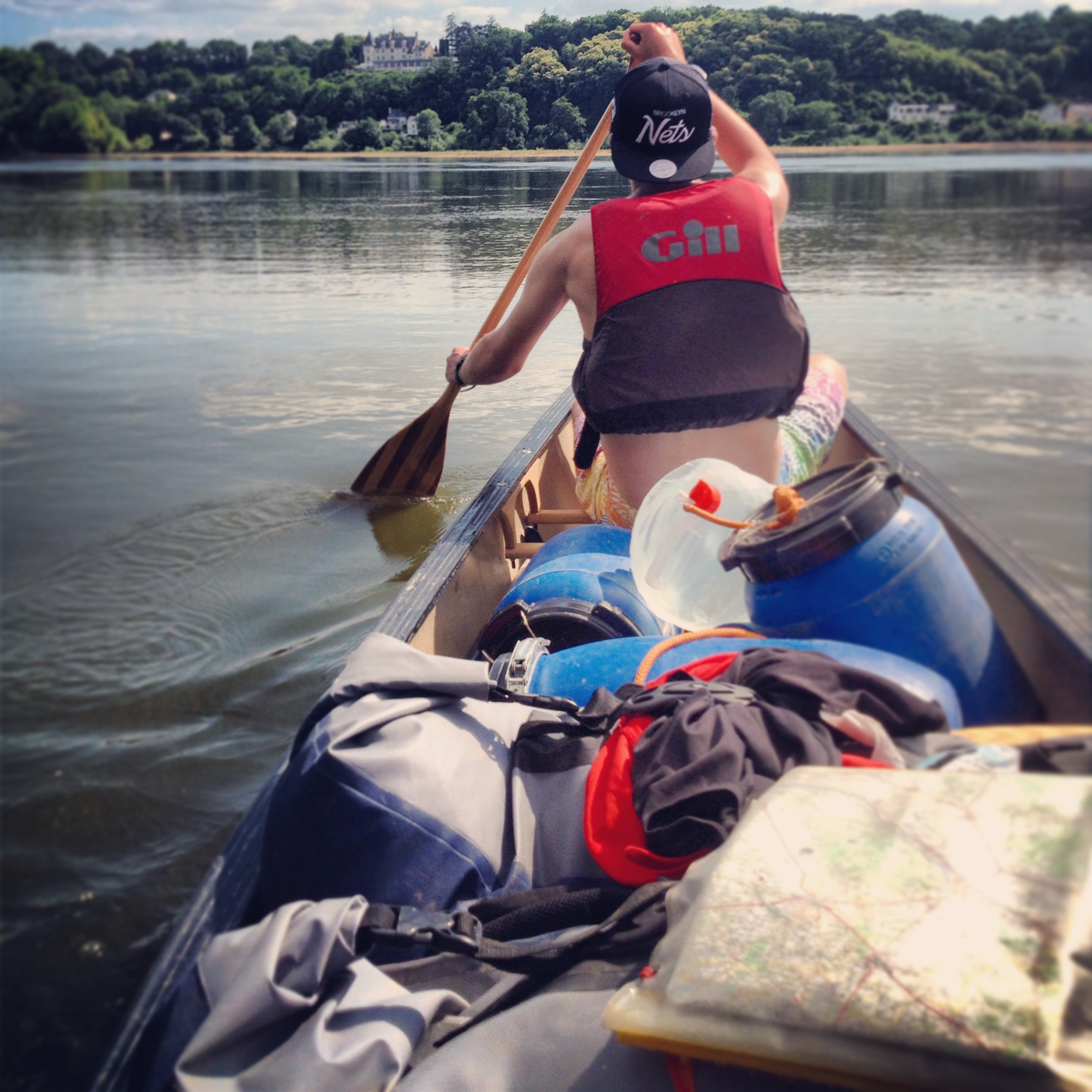Having now completed three weeks of upstream canoeing, the first stage of our journey is over.
We have finished with our 250 miles of the Loire and now move on to easier canal waters.
When we first dipped paddles into the Loire three weeks ago it was a navigable river.
It was wide, deep and wavey, with boats passing along the marked out channel.
Starting to paddle upstream was a shock to the body, but we learnt the tactics of hiding behind the rocky ‘groynes’ and avoiding the buoys where the main river flow would be.
By the end of Week 1 we were past the confluence with the River Maine and the buoys and larger boats had disappeared.
The river was just as quick as before, but with no groynes to hide behind the quicker waters they were exhausting.
With no marked channel there came more sand banks and we discovered towing which broke up the days paddling and moved us over shallower sections.
By Week 3 the river had changed noticeably.
No longer so obviously the longest river in France it had slowed and widened out with numerous islands and countless sand banks.
We found slower water far more often but learnt that every bit of slow water is followed by a rapid section somewhere. Q
uick, quick, slow, became the motion as we moved on dead water but towed on huge sand banks or tough rapids.
Towing was no longer the break it once was.
The latter weeks on the Loire saw its true beauty as a river no longer altered by humans and instead a site for tourism.
Fisherman, searching for the massive fish that jumped around our canoe, and canoeists heading downstream on day trips in the fine weather.
It’s not a bad place to paddle, it has to be said.
One new challenge we have experienced over the last week is the increased heat.
The French sun has been out as we begin heading south again and the temperatures have soared.
This has meant a more deliberate awareness of our hydration: stopping for drinks and swapping our positions in the boat more often.
The front and back of the boat present different challenges – physical and mental – and swapping helps keep us fresh throughout the long days.
Where we can, we paddle in the shade and at lunch time we head straight for the cover of trees where we unpack warm food from the barrels and slice cheese which has sweated as much as us.
As we leave the Loire we feel we’ve come to know it pretty well but are by no means sorry to see it go.
We hope the tough upstream work will be replaced by far easier water and increased mileage.
We’re under no false illusions, of course, we can but expect the unexpected.
As we leave the wide, flowing waters of one of Europe’s greatest rivers for the network of canal ways, we know that an entirely new set of challenges await.
Countless locks to overcome, new river traffic, and a list that will start to grow of all those other things we never even thought of.
TIBS News will have our latest in another exclusive weekly report, while more regular updates are available @CanoeingEurope on Twitter and at www.canoeingthecontinent.com.



















